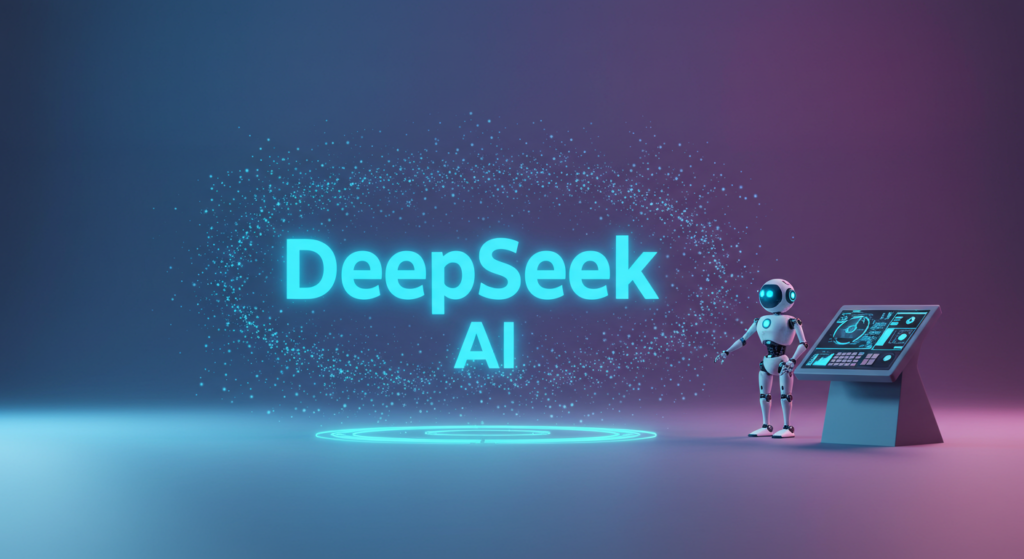
The artificial intelligence industry has been dominated by tech giants like OpenAI, Google, and Meta. With powerful models such as ChatGPT, Gemini, and LLaMA leading the way, it seemed nearly impossible for a new player to break into the market—until DeepSeek AI arrived.
DeepSeek is redefining the AI landscape by offering a cost-effective, highly efficient, and open-source alternative to existing models. Launched by a team of AI experts in China, DeepSeek has quickly gained recognition for its ability to deliver performance comparable to the most advanced AI models, all while operating at a fraction of the cost. In just a short period, DeepSeek has challenged industry norms, attracting attention from developers, businesses, and everyday users.
But what exactly sets DeepSeek apart? Is it a serious competitor to ChatGPT, Gemini, and LLaMA? And most importantly, is DeepSeek the future of AI? Let’s dive into the details.
What is DeepSeek? A Revolution in AI
DeepSeek is an AI company focused on developing powerful large language models (LLMs) that are open-source and cost-efficient. Unlike many proprietary AI models, DeepSeek offers free access to its model architecture and training data, allowing developers and researchers to improve upon its technology.
DeepSeek’s approach prioritizes efficiency, enabling high-quality AI processing with significantly lower computational requirements than its competitors. This makes it an attractive choice for businesses and developers looking for a high-performance AI solution without the massive costs associated with training and running models like GPT-4.
The Rise of DeepSeek: When Was It Launched?
Although DeepSeek is a relatively new entrant in the AI industry, its impact has been massive. The company was launched in 2023, and within just two years, it developed one of the most cost-effective and capable AI models in the market.
On January 10, 2025, DeepSeek introduced its first free chatbot app for iOS and Android, built on its DeepSeek-R1 model. In an astonishing turn of events, by January 27, 2025, the app had already surpassed ChatGPT as the most downloaded free app on the iOS App Store in the United States. This rapid adoption highlighted the growing demand for an AI alternative that is both affordable and powerful.

ALSO READ
Humanoid Robots & Human Clones: Science Fiction or the Future?
Meta Glasses: The Future of Stylish Smart Eyewear.
How Does DeepSeek Compare to ChatGPT, Gemini, and LLaMA?
The AI race is getting fiercer, and DeepSeek’s entry raises a crucial question: how does it stack up against the big names?
1. Cost Efficiency: DeepSeek’s Biggest Strength
Training AI models is incredibly expensive. For example, OpenAI reportedly spent around $100 million to train GPT-4 in 2023. In contrast, DeepSeek developed its DeepSeek-R1 model with just $6 million, making it one of the most cost-effective AI models to date.
Not only is its training cost lower, but DeepSeek’s operational expenses are also significantly reduced. The model requires only one-tenth of the computing power needed by leading LLMs, making it a practical and scalable option for widespread use.
2. Open-Source vs. Proprietary AI Models
One of DeepSeek’s biggest selling points is its commitment to open-source development. Unlike ChatGPT and Gemini, which are closed-source and controlled by their parent companies, DeepSeek allows developers to freely access its code, modify it, and use it for research or commercial applications.
This open approach accelerates innovation by allowing AI researchers and businesses to build on existing technology, rather than relying on proprietary AI models controlled by large corporations.
3. Performance and Capabilities
Despite being cheaper and more efficient, DeepSeek does not compromise on performance. The DeepSeek-R1 model can:
- Generate human-like text responses
- Handle complex queries
- Assist with content creation
- Improve customer support automation
- Analyze large volumes of data efficiently
While it may not yet outperform GPT-4 Turbo in every aspect, DeepSeek is closing the gap rapidly, making it a strong alternative for various applications.
4. Limitations: The Censorship Factor
One downside to DeepSeek is its content regulation policies. Being a Chinese-developed AI, DeepSeek follows strict censorship rules that align with the country’s regulations. This means that:
- Topics considered sensitive by the Chinese government are automatically restricted
- Questions related to politics, government policies, and controversial issues are either censored or avoided
- It lacks the freedom of expression that users get from models like ChatGPT
While this limitation affects its global reach, DeepSeek remains a powerful tool for general AI applications, especially for businesses and developers who prioritize cost and efficiency over unrestricted content generation.
Is DeepSeek the Future of AI?
DeepSeek’s rapid growth, cost efficiency, and open-source approach make it one of the most exciting AI projects to watch. While ChatGPT, Gemini, and LLaMA still dominate the market, DeepSeek has proven that AI does not have to be expensive or monopolized by tech giants.
However, its future success depends on several factors:
- Global Acceptance – If DeepSeek wants to compete internationally, it may need to balance content regulations with user demands for more open information access.
- Further Innovation – DeepSeek must continue evolving to match or exceed the capabilities of newer AI models.
- Enterprise Adoption – Businesses looking for cost-effective AI solutions could drive DeepSeek’s long-term success, especially if it offers superior customization and integration options.
Final Thoughts: A Strong Contender with a Promising Future
DeepSeek AI has already disrupted the AI industry by proving that high-performance AI models can be both affordable and efficient. Its low-cost training, minimal computational requirements, and open-source nature make it an attractive alternative to ChatGPT, Gemini, and LLaMA.
While censorship concerns may limit its global adoption, DeepSeek’s impressive rise suggests that it will play a major role in shaping the future of AI. As the industry moves toward more cost-effective and accessible AI solutions, DeepSeek’s approach could pave the way for the next generation of AI development.
For now, one thing is clear: DeepSeek is here to stay—and it’s only getting started.